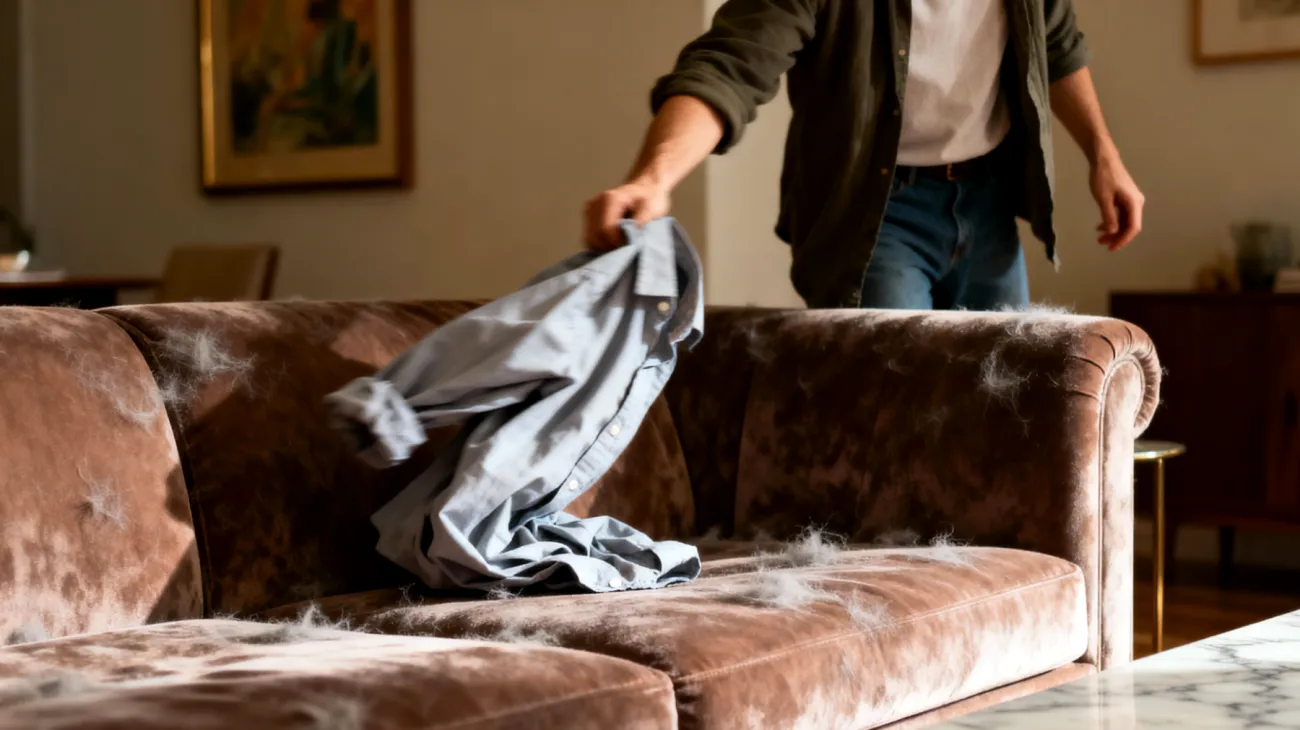Understanding Visual Weight in Interior Contexts
When it comes to creating a harmonious living space, we often focus on furniture placement, lighting, and decorative elements—but rarely consider how our clothing fits into the equation. Your favorite pair of distressed jeans might feel perfect for lounging at home, yet they could be quietly disrupting the carefully curated aesthetic you’ve worked so hard to achieve.
Denim isn’t neutral, despite what our casual wear habits might suggest. From a visual design perspective, it’s a textured material with distinct color, structure, and movement that can create what designers call “visual noise” in certain environments. Picture a serene living room with pale woods, neutral palettes, and airy linens—then imagine how heavily distressed, light-washed jeans might feel like an unexpected street mural dropped into a composed still life.
The psychology behind this goes deeper than simple aesthetics. Research on environmental psychology shows that our surroundings significantly impact our emotional responses, and spaces designed with intention create specific atmospheric effects. When elements don’t align with the established visual language of a room, they can create aesthetic disruption that affects how both residents and guests experience the space.
This becomes especially relevant when hosting. While you’re carefully arranging ceramic platters and lighting candles, your clothing choices become part of that overall composition. Guests implicitly tune into the context of their environment, and visual contradictions can send mixed messages about the experience you’re creating.
The Color Theory Connection
Understanding why certain jeans work better in designed spaces requires examining the fundamental principles that govern visual harmony. Colour theory principles apply to every element in your living space, including what you’re wearing within it.
Dark, non-distressed denim in a tailored fit appears to be the most aesthetically flexible option for home wear. These pieces work in both casual and semi-formal contexts because their deep indigo or black color acts visually closer to formal trousers, aligning naturally with wood tones, leather accents, and neutral walls.
The science behind this lies in how colors behave in interior environments. Darker colors tend to recede visually while lighter colors advance, which explains why dark wash denim feels less disruptive in carefully designed spaces. It naturally absorbs rather than reflects attention, supporting established color harmony instead of competing with it.
Here’s what makes dark, clean denim more design-friendly:
- Dark wash absorbs less attention: Deep navy or matte black tones blend with most indoor color palettes, bringing visual order instead of standing out
- No distressing equals less visual chaos: Clean fabric surfaces stay consistent, supporting the harmony crucial for polished spaces
- Tailored cuts maintain proportion: Refined fits keep your silhouette clean, echoing the spatial balance of well-designed rooms
- Minimal detailing supports neutrality: Avoiding flashy buttons or embroidery allows jeans to fade into the background rather than compete with intentional design elements
Applying Design Principles to Personal Style
The 60-30-10 rule, a well-documented principle suggesting dominant colors should comprise 60% of a space, secondary colors 30%, and accent colors 10%, can inform clothing choices within designed environments. Your clothes aren’t just functional—they become part of the visual composition you create in your home.
Consider different interior contexts and how clothing choices might support their established aesthetic. In living rooms with mid-century accents or soft neutrals, staying within similar tonal families creates visual cohesion. Slim dark jeans with soft monochrome knits and suede indoor shoes maintain complementary textures that work together rather than against each other.
For formal dining areas with wood finishes and decorative lighting, accent elements should remain minimal. In highly designed spaces, choosing the darkest clean-cut jeans available ensures your clothing doesn’t compete with intentional design elements. The more “finished” a room looks, the more your clothing choices benefit from reflecting that same level of intentionality.
This doesn’t necessarily mean formality, but coherence with established color and design principles. Think of it as treating your wardrobe like any other design element—something that should support and enhance the overall composition rather than distract from it.
The Psychology of Visual Harmony
Studies on interior color psychology demonstrate that carefully coordinated spaces create specific emotional responses—calm, focus, energy, or relaxation. When elements within those spaces feel discordant, they can disrupt these carefully crafted atmospheric effects. Few things undermine thoughtful design choices quite like clothing that contradicts the established visual language.
From a design psychology standpoint, organized and intentional environments promote feelings of calm and control. When clothing choices feel random or unconsidered within these spaces, they introduce visual discord that can create subliminal tension. The psychological principle of cognitive consonance suggests we feel most comfortable when all elements of our environment feel aligned and purposeful.
This becomes particularly relevant in spaces designed around specific aesthetic principles. Successful interior schemes depend on visual consistency—not rigid uniformity, but thoughtful coordination. When personal styling contradicts these established principles, it affects how both you and your guests experience the space on a subconscious level.
Practical Applications for Everyday Living
Integrating design consciousness into your clothing choices doesn’t require extensive wardrobe changes or uncomfortable compromises. Simple adjustments that reflect established design principles can help align personal style with interior aesthetics while maintaining comfort and practicality.
The key lies in treating clothing choices as part of your broader color and texture palette, just as interior designers consider every visual element within a space. Successful schemes depend on intentional relationships between all components, not just permanent fixtures and furnishings.
Practical adjustments might include tailoring hems for clean lines that maintain proportional relationships, rotating between high-quality pairs in dark indigo, charcoal black, and deep gray that work with most interior color schemes, and matching textures rather than just colors. If your jeans have rough texture, pair them with equally tactile pieces like coarse knits or suede accessories.
Most importantly, avoid visible wear and tear that might contradict the maintained aesthetic of designed spaces. Environmental psychology research suggests our surroundings significantly impact our mental state, and clothing showing obvious wear can disrupt the positive psychological responses promoted by intentional interior design.
The Social Dimension of Design Integration
While specific research on guest perceptions remains limited, broader environmental psychology studies show that people respond to the totality of their surroundings. To visitors, your appearance becomes part of the overall ambiance—just like lighting, music, or scent. When you invest effort in quality serving pieces and maintained upholstery, clothing choices that contradict this attention to detail can send mixed signals.
Environmental coherence research indicates that spaces feel most psychologically comfortable when visitors can easily understand the aesthetic logic at work. When every element reflects similar values of quality, intention, and coordination, guests can relax into the environment rather than processing visual contradictions.
Think of dark jeans like modernist architectural materials—clean, versatile, and modest. They support the room’s existing structure rather than competing with it, creating the kind of elegant neutrality that makes spaces feel both intentional and welcoming.
Comfort Meets Conscious Design
The most successful interior designs achieve both physical comfort and visual harmony through thoughtful selection rather than compromise. A well-chosen pair of jeans can function like any other carefully selected element in your home—supporting the overall composition while serving your practical needs.
There’s no need for sartorial pretension or physical discomfort. The value lies in treating clothing choices as part of your broader living space—part of its color story, textural language, and overall visual coherence. In beautifully composed rooms, your visual presence becomes part of the composition, and this awareness enhances rather than constrains both comfort and functionality.
As our homes increasingly serve multiple functions—work, entertainment, relaxation, and social connection—the integration of personal style with interior design principles becomes more relevant. The best clothing choices, like the best interior design decisions, succeed when they support your lifestyle while reflecting intentional aesthetic choices that promote wellbeing, focus, and social comfort.
The most effective approach results in clothing that disappears into the background while continuing to serve you perfectly every time you move through your carefully designed space. Just as the best interior design feels effortless while being deeply intentional, successful clothing choices support both personal comfort and visual harmony without calling attention to the effort involved. This represents not constraint, but consciousness—an awareness that enhances both beauty and comfort in daily life.
Indice dei contenuti

